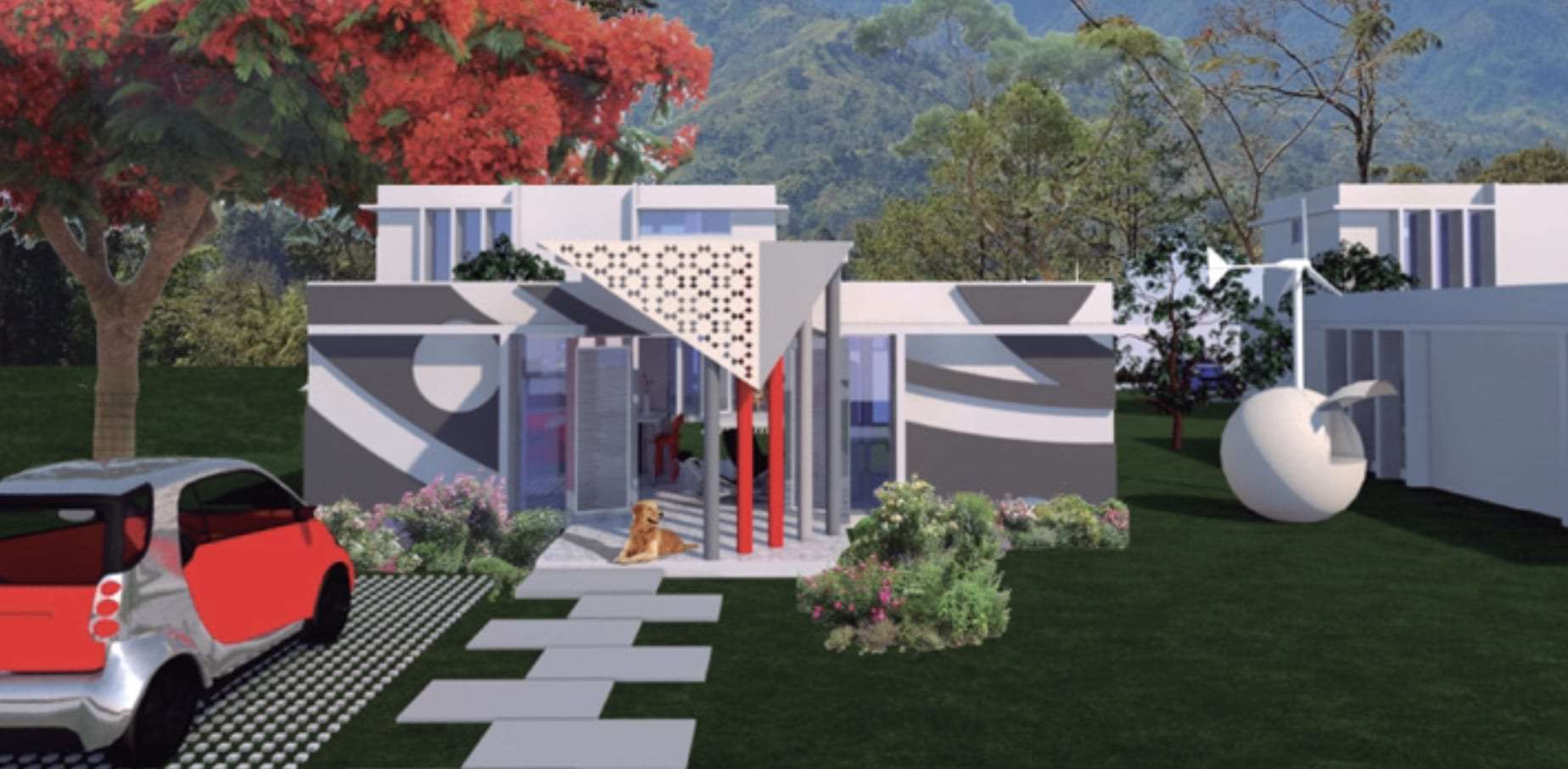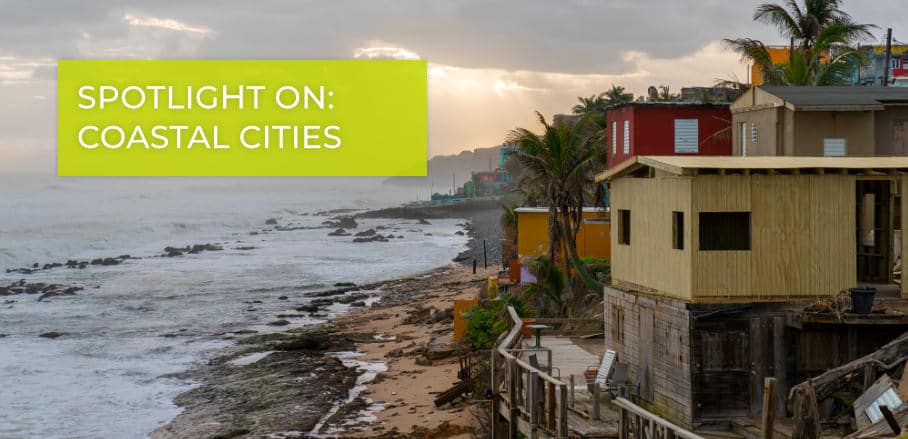Puerto Rico: Architecture and a “Culture of Emergencies”
Puerto Rican architect Astrid Díaz on the importance of resilient housing, education, and participation in a country prone to cyclones and earthquakes.
Puerto Rico is known as the “Island of Enchantment” – until the hurricanes hit. The joyful Caribbean ambiance, together with our natural and architectural beauties, is clouded by the threats that year after year come with the hurricane season that lasts from June 1 to November 30. Additionally, the island is located in an area of great seismicity: in January 2020, when the country was celebrating the Christmas festivities on “Dia de los Tres Santos Reyes”, an earthquake caused the collapse of many houses built informally, not following the design plans of the Puerto Rican building codes based on the International Building Code.
Industrialisation and Hurricanes
The urban and economic development of our island began in the 1950s, when the country started its industrialisation. A tourism industry developed that was based mainly on hotels and luxury condominiums on our beautiful beaches. Puerto Rico became the “Showcase of the Americas.” Neither hurricanes nor earthquakes occurred in the following decades, creating a false confidence in Puerto Ricans that the island would never be hit again by cyclones or earthquakes.
This changed in 1989, when on September 18, Hurricane Hugo entered Puerto Rican territory on the east coast and left through the north. From that moment on, we entered a cycle of great hurricane activity, which has been accentuated by climate change.
Of the 78 municipalities on the island, 44 are coastal and as such prone to storm surge, flooding, and tsunamis. When the powerful Hurricane María approached Puerto Rico on September 20, 2017 with winds of 154 miles per hours (mph), the radars of the National Meteorology Centre blew up. Therefore, it could not be made official that it entered as a category 5 hurricane. However, private weather stations registered gusts of up to 196 mph. Hurricane Maria devastated the complete island of Puerto Rico and marked us forever.
When it hit, 47 per cent of the houses were of improvised construction, leading to more than 500,000 houses affected or destroyed. The entire electrical system collapsed, leaving the island completely without power. Only 8 of the 300 main roads were passable, while hospitals and police barracks remained unusable or isolated. Puerto Ricans for months, and in some cases for years, faced adverse circumstances to life, health, and social well-being. 3,000 deaths are associated with the passing of the atmospheric event.
How to Become Resilient
Today the big challenge is the planned, strong, and resilient reconstruction of the country that ensures citizens participation in the development of a “Culture of Emergencies“. Architecture is a powerful tool in this process.
For 18 years, I have led projects and media campaigns on “Safe House and Natural Hazards”. Previously, families prepared for a hurricane within a few days: they stocked up with supplies and moved to safe shelters. Our campaign established a new paradigm: associating design and safe construction with the protection of life and the tranquillity of your family.
We held professional orientations in the shopping centres, on television, radio, and social networks, reaching all Puerto Ricans. I established a brigade of architecture and engineering students called “Casco Time”. We visited devastated communities, aiming to bring hope through design. We distributed 2,000 detailed plans of safe construction to educate each citizen regardless of their social status, age, education, or financial means. As principal of my firm ADV Architects, I was part of a team of specialists, the “Mitigation Assessment Team” of the Federal Emergency Management Agency (FEMA) based in Washington DC to develop its study on the effects of cyclone Maria to buildings and to recommend mitigation measures.

After hurricane María, Díaz established the brigade of architecture and engineering students “Casco Time” (“Yellow Helmet”) visiting devastated communities bringing hope through design and distributing 2,000 detailed plans of safe construction. © Astrid Díaz
Our most important recommendation has already been realised: a new building code that addresses the new safety design parameters in the face of natural events, including the analysis of winds according to the topography of Puerto Rico, in the mountains, the coast, or in a valley.
“The Safe House of Puerto Rico” and the “Safe Residential Plans”
The experiences from María have led my architecture firm to implement two important projects in the design of houses resistant to earthquakes and hurricanes: “The Safe House of Puerto Rico” and the “Safe Residential Plans”.
The Safe House of Puerto Rico is a modular home that uses the ecological material of polystyrene and steel as its base. It features cross ventilation, natural lighting, integration of cultural elements such as the balcony and its ornamentation that alludes to our flag. In addition, it is affordable and adaptable to family growth.

The “Safe House of Puerto Rico” is an ecological modular home that presents elements of Puerto Rico’s culture, specially in its balcony ornamentation that alludes our flag. © Astrid Díaz
The “Residential Safe Plans” were entrusted to our firm by FEMA through Stantec and Starr 2, a joint venture of Stantec and Atkins North America, to be distributed at no cost to families with limited incomes. Puerto Rico’s government agencies such as the Department of Housing, and the Permit Management Office, will manage their delivery. Families can choose between four models made from concrete, wood, or a combination of materials. People must complete the construction permit process hand in hand with an architect who will locate the house on the site, conduct soil studies, make the necessary adjustments, and decide on the final construction plan. The houses are designed to withstand winds of 196 mph and are the first with a safe room or residential shelter whose structure and foundations are independent from the rest of the house, sustaining winds of up to 250 mph.
The Need for a Culture of Emergencies
There is no doubt that these projects will contribute to our resilient rebuilding by safeguarding life and property. However, in order to break the cycle of improvised construction and the catastrophic panorama that is repeated in each natural disaster, we also need to educate.
What we need is a “culture of emergencies” that is focussed on prevention, education, civic duty, and construction. It is self-protection. It is safe architecture and construction and thus an investment in life. It is building according to codes and planning for sustainable cities and redevelopment of our urban centres in a way that protects the historical heritage of a country.
Being survivors of a natural disaster does not by itself translate into a culture of emergencies.
It is therefore important that the government establish public policies aimed at achieving this culture of emergency and operational continuity. This includes prevention, maintenance, and protection plans for the country’s critical infrastructure.
Puerto Rico should form multisectoral alliances to develop a plan for the reconstruction of the country in a sustainable and intelligent way, including constant education for citizens as well as their participation.
Being prepared for emergencies and planning how to respond to them is not what really cost us. The opposite – not being prepared – will costs us lives, structures, memories, and culture.
- Puerto Rico: Architecture and a “Culture of Emergencies” - 1. October 2020
